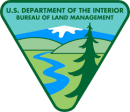Location



















States
Colorado, UtahEcosystem
River/streamIntroduction
The Dolores River Restoration Partnership (DRRP) is a public-private collaborative of partnering individuals, organizations, and agencies working to restore plant communities in the riparian riparian
Definition of riparian habitat or riparian areas.
Learn more about riparian corridor of the Dolores River, which flows from the San Juan Mountains of southwestern Colorado to eastern Utah, where it meets the Colorado River. Since 2009, DRRP has worked to remove invasive plant infestations that have displaced native plant communities, degraded wildlife habitat and forage, hindered access to campsites and other recreational opportunities, and increased wildfire risk in the riparian corridor.
The Dolores River Restoration Partnership has brought together more than 30 organizations, dozens of private landowners, and hundreds of volunteers to work toward the common vision of restoring the riparian system of the Dolores River. This broad community of partners, working along nearly 200 miles of the Dolores River, has been guided by the Dolores River-Riparian Action Plan (DR-RAP). Developed by stakeholders in 2010, DR-RAP guided partner decision making with its documentation of a shared vision and set of goals, and its criteria for prioritizing restoration actions. It laid out five-year goals that included social and economic factors in addition to ecologic metrics.
While DR-RAP was instrumental during these dynamic years characterized by highly intensive, active implementation work, it did not articulate how to plan beyond the initial five-year phase of the partnership. A collaborative solution for the next stages of the partnership was initiated in 2012 to address the long-term monitoring and maintenance strategies for the DRRP. This collaborative solution is documented as Dolores River Restoration Partnership
Transition Plan 2015 – 2019.
Fundamentally, the Transition Plan answers the following questions:
- How does the Partnership protect the dollars, social capital, time, and capacity that have been invested in the Dolores River watershed?
- When does DRRP cease to exist and/or transition its management of a project to another entity for continued monitoring and maintenance?
- What does the transition to monitoring and maintenance look like?
- How can the partnership be successful in achieving its long-term vision?
Key Issues Addressed
In 2009, the Dolores River riparian corridor was dominated by invasive vegetation, including tamarisk. The area provided low habitat value for native wildlife, contained an entrenched channel with armored streambanks, and was at high risk for catastrophic fire. Decreasing water availability, partially caused by a trans-basin water diversion high in the watershed, limits the ability of the system to naturally establish and support native plant communities. The region also suffered from economic stagnation and social detachment from the river. DRRP was formed in 2010 to address environmental issues while providing economic and social opportunities for local industries and communities.
Project Goals
There are four categories of goals assigned by DRRP: ecological, social, economic, and management. Originally developed in 2009/10 through DR RAP as “five-year goals,” they were revised in the 2014 Transition Plan.
Ecological Goals: enhanced plant communities
- Increase the number of acres of sustainable, healthy riparian and floodplain plant communities in the watershed while reducing those dominated by tamarisk and other invasive, non-native plant species.
- Live tamarisk will be reduced to less than 5 percent of the vegetation cover while other invasive, non-native plants will be reduced to less than 15 percent of the vegetation cover within the riparian corridor; the remaining percent vegetation cover will be composed of desirable or native species.
- Total vegetation cover within the riparian corridor will be greater than or equal to 30 percent (if less than 30 percent, ensure that vegetation has been deemed to be adequate for the site).
Social Goals: youth, public safety, and aesthetics
- Increase opportunities for the next generation of stewards with regional conservation and youth corps programs that support underserved young adults.
- Increase public safety both by reducing wildfire-related risks with strategic fuel reductions as well as by improving highway safety with increased sight distance along state and county roads.
- Improve aesthetic enjoyment for recreationists and create a positive framework for them to interact with restoration work by pairing tamarisk control with intensive active restoration at sites frequented by the public.
Economic Goals: employment, local investments, efficiency, and recreation
- Increase employment opportunities for contractors and youth in the Dolores River area.
- Invest in the local economies of the Dolores River Area.
- Improve effectiveness and financial efficiency of our riparian restoration efforts by identifying and promoting cost-saving methods.
- Enhance visitor travel to the area for recreation (e.g., rafting, hiking, hunting, and wildlife viewing).
Management Goals: learning, sharing, and improving
- Facilitate communications between land managers and partners to help coordinate treatments, share lessons learned and increase treatment effectiveness/efficiency by sharing resources and crossing administrative boundaries.
- Incorporate educational and interpretive practices to enhance public understanding and appreciation of riparian restoration actions.
Project Highlights
DRRP Recognition: The partnership was awarded the Colorado Collaboration Award in 2015 for outstanding collaborative efforts; the award included $50,000. Funds were used to bolster collaborative efforts and increase partnership capacity.
- Progress towards ecological goals as of December 2017:
- Acres of initial tamarisk treatment – 1797
- Acres of tamarisk re-sprout treatment – 1883
- Acres of secondary invasive weed treatments – 3185
- Acres of native re-vegetation planted and/or seeded - 550
- Acres of riparian areas considered restored – 987
- Progress towards social goals
- Number of young adults/youth corps members employed by DRRP – 315
- Number of youth corps employment/work hours - 124,620
- Number of jobs created for local contractors – 99
- Number of volunteer hours - 7142
- Partner Collaboration: Lessons learned from restoration have been shared across the partnership. In addition to partner collaboration on pilot projects, DRRP hosts external restoration specialists for on-the-ground workshops and coordinates site visits to facilitate collaborative problem solving. Partnership coordinators integrate various forms of knowledge and facilitate biannual partnership meetings, where partners not only share information and discuss critical challenges, but also celebrate successes.
Lessons Learned
Partnership success comes from the establishment and maintenance of a responsive governance structure structure
Something temporarily or permanently constructed, built, or placed; and constructed of natural or manufactured parts including, but not limited to, a building, shed, cabin, porch, bridge, walkway, stair steps, sign, landing, platform, dock, rack, fence, telecommunication device, antennae, fish cleaning table, satellite dish/mount, or well head.
Learn more about structure , jointly developed planning resources, continual refinement of monitoring protocols for utility and feasibility, and a shared commitment to implementing lessons learned.
The riparian system requires perpetual effort to maintain the progress made through DRRP efforts; the underlying ecosystem stressors including anthropogenic river management, water resource utilization, and decreased water availability have not been comprehensively addressed. While the Partnership continues to engage youth corps, private contractors, and public agencies to accomplish invasive vegetation control, wildfire risk reduction, and habitat restoration, the Dolores River Restoration Partnership is in need of a long-term maintenance plan. Social and economic benefits are critical to the success of the plan.
Participant turnover is always going to be a challenge. Long-term partnerships require a plan to foster and redevelop leadership. Dynamic leadership must allow for periodic re-visioning to re-balance leadership roles and partnership direction.
Next Steps
- Continue monitoring and maintenance through the term of the current five-year plan (2019)
- Implement a third round of strategic planning
- Strategize for addressing hydrologic challenges and maintenance of restored habitat
- Develop opportunities for restoration on private and other lands where restoration has not yet been prioritized
Funding Partners
- Walton Family Foundation
- Colorado Water Conservation Board
- Colorado Parks and Wildlife
- Colorado Forest Service
- Bureau of Land Management – Colorado and Utah
- Utah – Watershed Restoration Initiative
- The Nature Conservancy
- National Fish and Wildlife Foundation
- Patagonia
- Backcountry.com
- Southwestern Water Conservation District
- Colorado River Water Conservation District
- Telluride Foundation
- National Wild Turkey Federation
- US Fish and Wildlife Service – Partners for Fish and Wildlife
- Hendricks Charitable Foundation
- Packard Foundation
- Colorado Nonprofits Association
Resources
- Dolores River Restoration Partnership
- Dolores River Restoration Partnership (DRRP) Science & Monitoring Subcommittee
Contacts
- Rusty Lloyd, Executive Director, RiversEdge West: rlloyd@riversedgewest.org
Case Study Lead Author
- Rusty Lloyd, Executive Director, RiversEdge West: rlloyd@riversedgewest.org
Suggested Citation
Varner, D. (2018). “Dolores River Restoration Partnership: A Public-Private Collaborative for Riparian Restoration.” CART. Retrieved from https://www.fws.gov/project/dolores-river-restoration-partnership.






